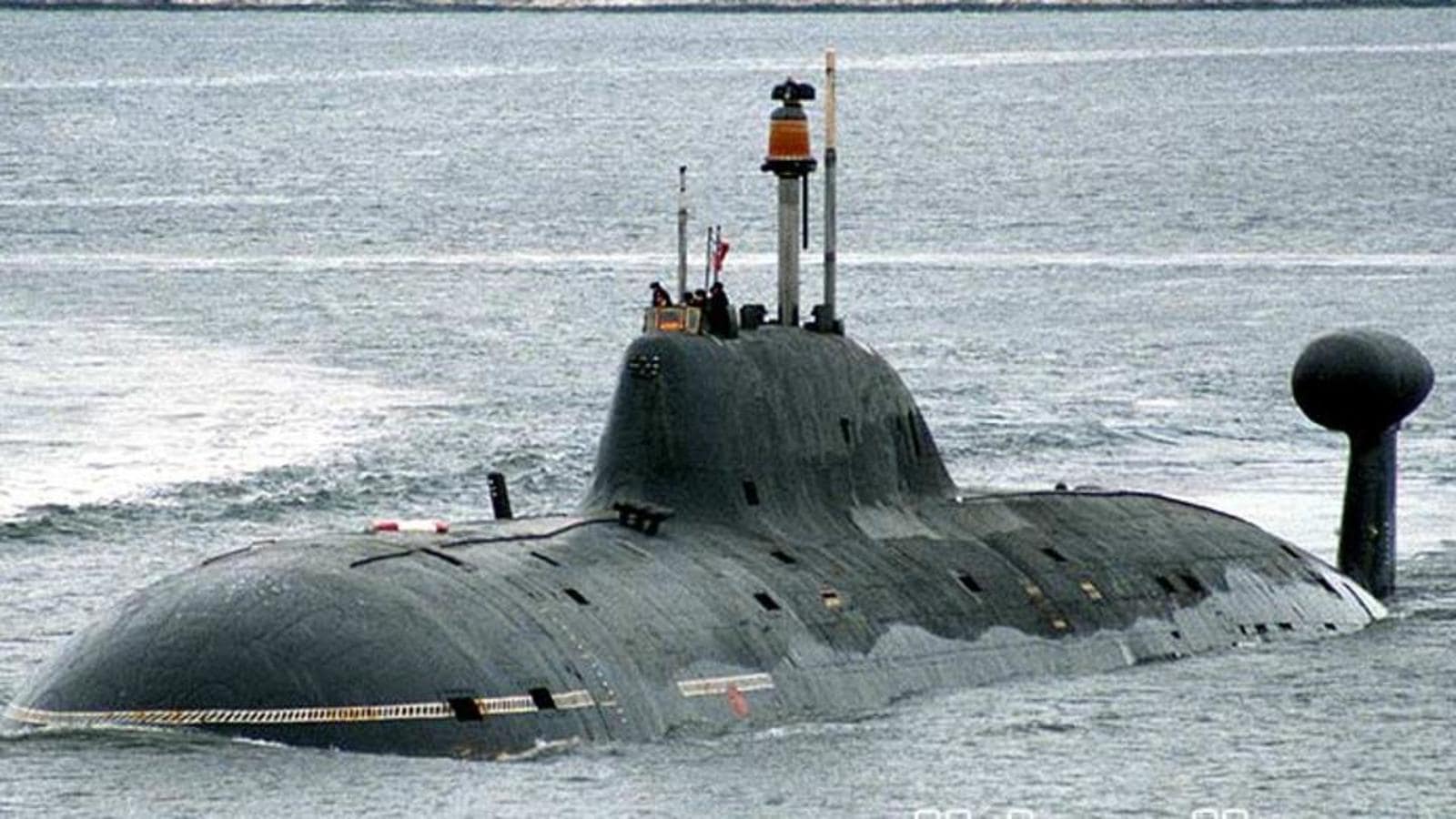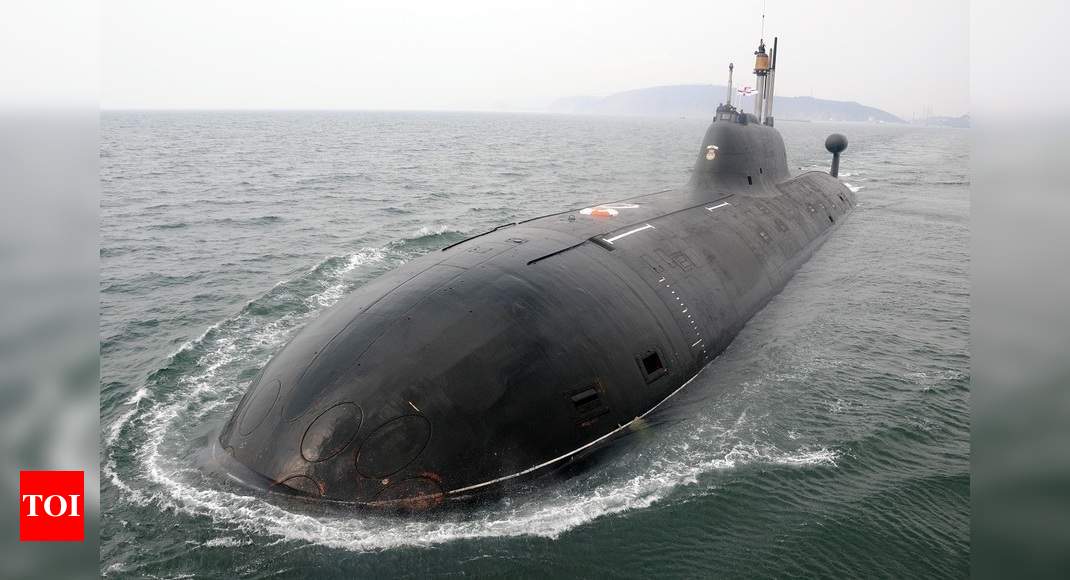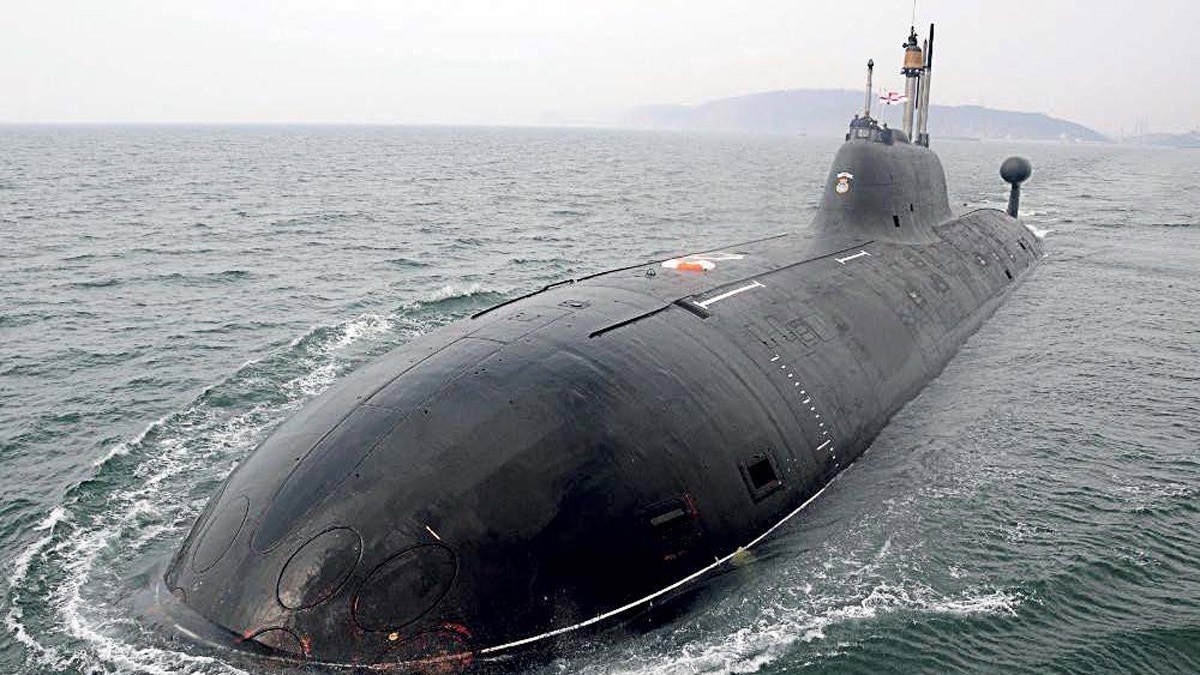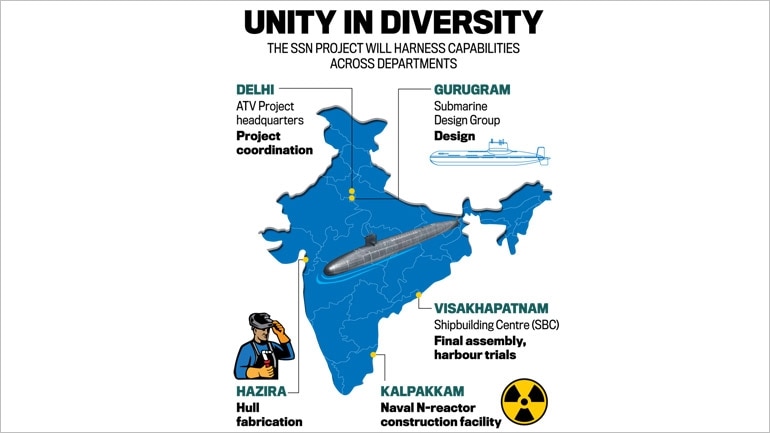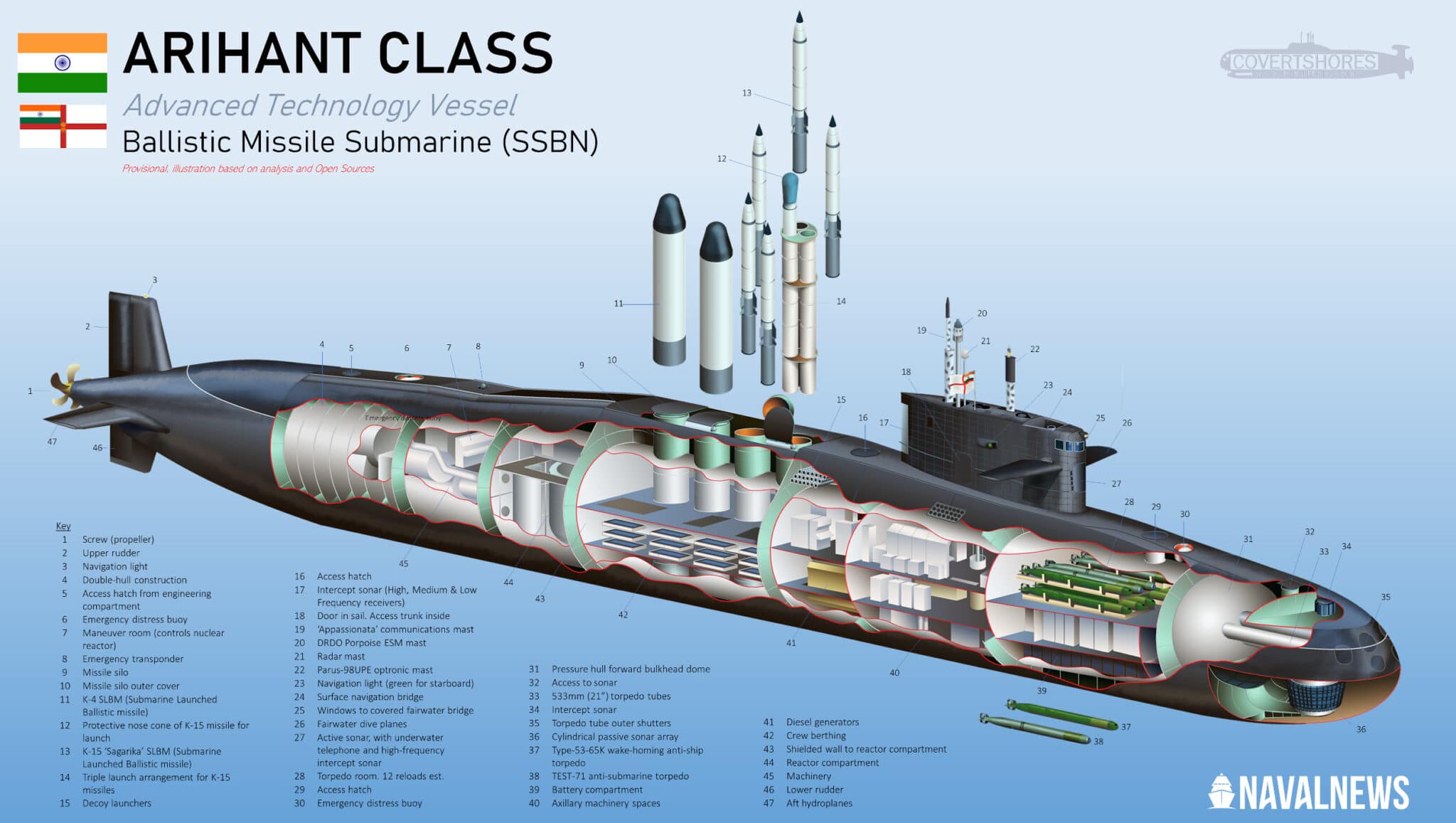A long-delayed project nears CCS clearance even as India's submarine force gets long in the tooth. Why the N-powered attack submarine project has taken so long

www.indiatoday.in
The PowerPoint presentation by navy chief Admiral Karambir Singh at the combined commanders’ conference in Kevadia, Gujarat, on March 6 this year had been some months in the making. For nearly 18 months now, the proposal to indigenously build six nuclear-powered attack submarines (SSNs) for Rs 96,000 crore had been stuck with the Cabinet Committee on Security (CCS) as senior government officials questioned the need for the platforms during an economic crisis. The navy chief pressed Prime Minister Narendra Modi over the urgency of the programme to build the SSNs, each displacing around 6,000 tonnes and costing around Rs 16,000 crore, as key to solving the crisis in India’s underseas combatant arm. The bulk of India’s conventional submarine fleet, acquired in the 1980s, are approaching the end of their 30-year service lives. Bureaucratic delays have hit their replacements.
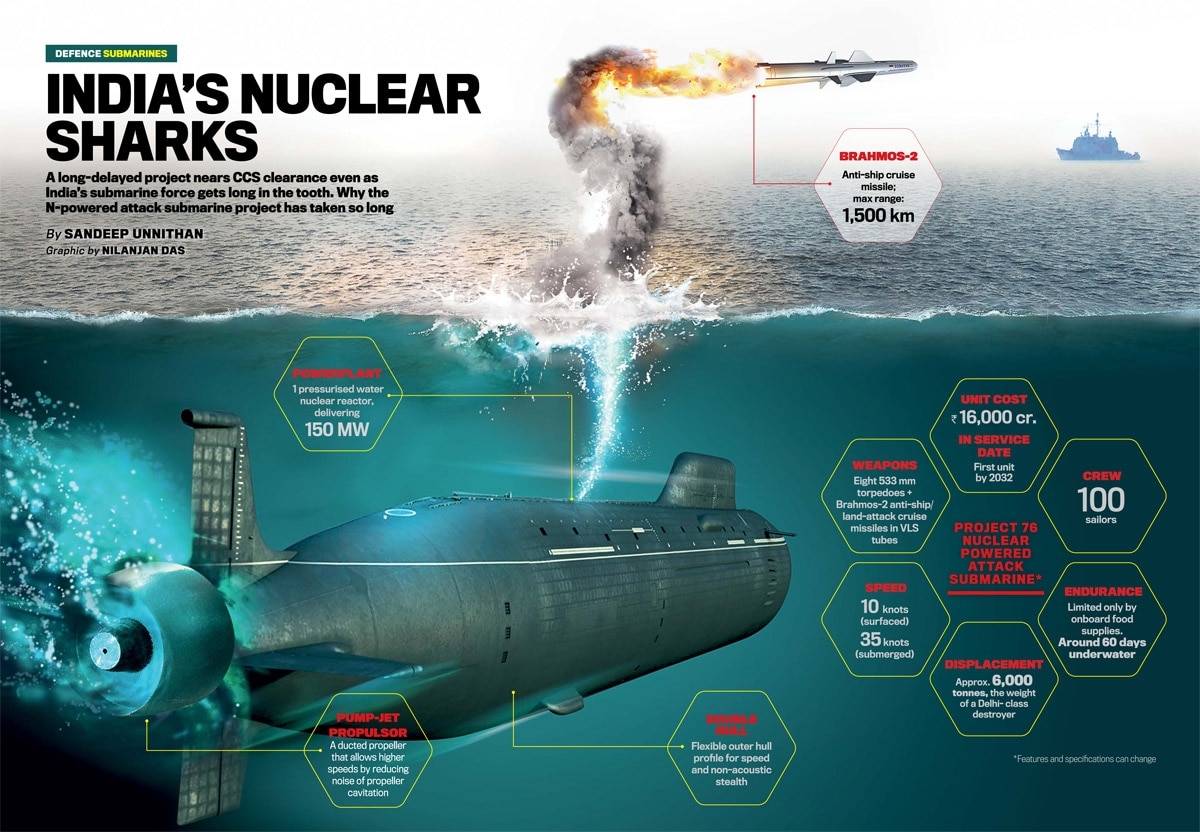
The underseas arm is shrinking at a time when India’s principal adversary, China, has initiated the largest post-Cold War naval expansion. The PLA (People’s Liberation Army) navy is now the world’s largest in number of warships, and will continue to grow over the next decade, not only adding new aircraft carriers, nuclear submarines and surface ships but also expanding its reach through distant deployments in the Indian Ocean region.
Admiral Singh’s pitch seems to have worked. The CCS is now set to fire the starter’s pistol on a project that has been on the blocks for two decades. The CCS nod will release government funds so that the geographically scattered, technologically challenging project can finally get under way. The project involves a final design clearance in Gurugram, nuclear reactor construction in Kalpakkam, hull fabrication in Hazira and assembly and sea trials at the ship-building centre (SBC) in Visakhapatnam. It will take over a decade for the first 6,000-tonne submarine to enter the waters. It is believed that an ambitious naval project to build a second indigenous aircraft carrier, the 65,000-tonne IAC-2, has now been shelved in favour of the SSN project.
The SSN project has remained in the shadows of India’s Advanced Technology Vessel (ATV), a top secret effort to build four nuclear-powered ballistic missile submarines (SSBNs). The INS Arihant was commissioned in 2016 and the second unit, the S3, will be commissioned this year. Two more units, the S4 and the S4*, will be inducted by 2025.
Both SSBNs and SSNs use nuclear fission reactors to generate enormous heat generating steam to drive a propeller shaft. But that’s where their similarity ends. SSBNs are like strategic bombers, tools of deterrence stealthily lurking under the ocean with their ready-to-fire nuclear-tipped missiles. SSNs are the underwater equivalent of fighter jets. Conventional diesel-electric submarines are in reality submersibles, they have to ‘snorkel’ close to the surface of the water, to suck in air to run their diesel engines and recharge their batteries, when they are most vulnerable to detection. They can sustain submerged speeds of 20 knots in only short bursts of around half an hour. SSNs are true submarines in that they can stay and operate underwater almost indefinitely, their endurance is limited only by food supplies for the crew. They are also equipped with a range of tactical weapons like torpedoes, anti-ship cruise missiles and land-attack cruise missiles.
Since the 1990s, the Indian Navy has projected a requirement of at least six SSNs to patrol its sphere of influence in the Indian Ocean. It presently has only one, the Chakra-2 taken on a 10-year lease from Russia in 2012. The Chakra-2 is only months away from being returned after the expiry of its agreement. It will be at least six years before its successor, the Chakra-3, joins the navy. This former Russian navy nuclear-powered submarine is being refitted in a Russian shipyard to Indian specifications in a $3 billion (Rs 21,000 crore) agreement inked in March 2019.
There will be a four-year gap in the navy’s underwater capabilities before Chakra-3 arrives. But it won’t be the most egregious void. The navy is already staring at a ‘lost decade’ where it will acquire just three conventional submarines through the 2020s as against a requirement of at least a dozen such vessels. Only six of the projected 24 submarines under the navy’s 30-year submarine building plan proposed in 1997 will join as per plan. The Rs 45,000 crore Project 75I to indigenously build six large conventional submarines which can operate near the maritime chokepoints of the Indonesian islands, has been held up for 15 years. A bulk of the navy’s fleet of 15 conventional submarines are over 30 years old. A handful have been given deep refits in Russian shipyards to extend their service lives. A fleet of indigenous SSNs, which will begin to arrive in the next decade, will do little to resolve the current crisis.
India’s stop-start SSN quest
The Modi government’s thinking for submarines over aircraft carriers was shaped to a large extent by the committee of experts headed by Lt Gen. D.B. Shekatkar. The committee, which submitted its report to defence minister Manohar Parrikar in December 2016, explicitly struck down the proposal for a third aircraft carrier and pitched for more submarines. Parrikar shared this view as well. The late defence minister frequently argued that the only way India could counter a growing Chinese surface fleet was by fielding submarines that could hunt them.
Perhaps Parrikar knew what the American intelligence assessments had repeatedly flagged. The PLA navy was growing fast, but so was its Achilles’ heel, the lack of anti-submarine warfare capabilities. This vulnerability is best exploited by nuclear-powered attack submarines, what nuclear strategist Rear Admiral Raja Menon (retired) calls “the ultimate arbiter of sea power”. An SSN moves at speeds of over 30 nautical miles per hour underwater (55 kmph), the top speed of the navy’s most powerful surface combatant, a Delhi-class destroyer. Swiftly moving under the ocean, it can stalk and strike at enemy warships and shore targets with its arsenal of deadly heavyweight torpedoes and long-range cruise missiles. They are the only platform that can operate independently and discreetly in enemy waters, thus posing an asymmetrical threat. Their lethality and near-invulnerability has even inspired a popular meme, ‘There are only two types of vessels at sea, submarines and targets.’ The technological complexity of fitting in a compact high-performance reactor inside a submarine hull has restricted this capability to only the five permanent members of the UN Security Council.
Unsurprisingly, their game-changing utility has been grasped by politicians with great power dreams. Even those with a perceived landward bias. Mao Zedong, who had once operated out of mountain caves as a guerrilla, said in 1959 that China would produce nuclear submarines even if it took “10,000 years”. The first Chinese SSN entered service in 1974 and was named ‘Long March-1’ after the definitive event in the chairman’s life. It was noisy and leached radioactivity but propelled China as the last entrant into an elite club.
The event did not go unnoticed by Indian planners, nervous at the prospect of nuclear weapons wielded by its unpredictable northern neighbour with whom it had already fought a border war in 1962. The government’s Apex Committee-1, headed by career diplomat D.P. Dhar, which drafted the Indian Defence Plan between 1974 and 1979 noted that “the only arm of China’s navy that can be used against us is her submarine arm”. Yet, by then, the Indian state had already set its sights on SSBNs. In 1968, then prime minister Indira Gandhi’s principal secretary P.N. Haksar had already outlined the need for “submarines driven by nuclear power fitted out to carry nuclear missiles” as a deterrent against China. The ATV project yielded a modest seaborne nuclear deterrent only a half-century later, in 2018, when the INS Arihant sailed out on its first deterrent patrol.
Defence analysts say India’s future SSN fleet would provide several operational advantages that submarines in general, and SSNs in particular, bring to seapower. “Submarines missing from home harbours, whether SSK, SSN or SSBN, leverage what I call oxymoronic ‘covert presence’ worries as did happen to Pakistan during the Kargil conflict,” says naval analyst Rear Admiral Sudarshan Shrikhande (retired). “They may operate at slower speeds in patrol areas, but deployment and relocation speeds create more options. Armed with land attack and long-range anti-ship missiles and near-constant communication linkages, they are important parts of sea control, power projection and, of course, even more lethal sea denial, depending on strategic and operational contexts.”
Former project officials say the SSN plan has been on the slow burner for over two decades, mainly over its prohibitive cost. Unlike the strategic ATV SSBNs paid for by the central government through separate budgetary heads, SSNs will be paid for by the navy. The navy accounts for the smallest share of the defence budget, just 14 per cent, so will have to rationalise its spend in buying new warships, aircraft and submarines.
Budgetary worries and the naval brass’s bias for aircraft carriers probably explains why Project 76 has struggled to take off since it was given an in-principle approval by the government in 1998. In 2006, when a committee headed by then principal scientific advisor to the PM, R. Chidambaram, identified the technology that would be needed to develop a new generation of nuclear submarines, three new ‘S-5’ SSBNs displacing around 13,500 tonnes. Both designs would be powered by a new indigenously designed nuclear reactor designed by BARC (Bhabha Atomic Research Centre). This high performance reactor, believed to have an output of around 190 MW, would be a vast improvement over the Arihant class’ modest 83-MW reactor. In 2007, a naval HQ paper projected a formal need for six SSNs with the first unit to be fielded in 15 years (by 2022). The project, however, lay in cold storage with the navy prioritising aircraft carriers and surface ships over submarines.
Meanwhile, the PLA navy’s submarine threat had already become a reality. The first distant ocean patrol by a Chinese Shang-class SSN in December 2013 woke up naval planners to the PLA Navy operating in its backyard. This was one factor that spurred an in-principle government approval for an SSN design study in February 2015. In December 2016, then navy chief Admiral Sunil Lanba, the first government official to acknowledge the project, parsed his words. “It has kicked off. It is a classified project. The process has started.” Five years later, Project 76 is still in its design stage. The navy’s Submarine Design Group (SDG), it is understood, is yet to finalise the design. It will take at least two more years for this to happen before work can begin on fabricating the hull for the submarine.
By 2030, China’s overall submarine force would have grown to 76 boats (8 SSBNs, 13 SSNs and 55 SSKs), as per a 2020 US Office of Naval Intelligence assessment project India’s delays have been budgetary and bureaucratic. The navy has tried to match a brown water budget with its blue water aspirations. More recently, it clashed with Chief of Defence Staff (CDS) Gen. Bipin Rawat who indicated the government’s preference for submarines over aircraft carriers.
In a December 2020 interview to india today, Gen. Rawat said that “anything which moves on the surface, even on land, and at sea will get picked up”. “Today, you’ve got fairly accurate systems to bring down anything on land or at sea. So aircraft carriers are going to be vulnerable. One might say they keep moving, but so does the (enemy)it has the capability to keep you under observation and target you based on where you are next,” he said. The government’s view seems to have now prevailed. The indigenous SSN will now have to overcome technological challenges; the nuclear scientists have to design a powerful new pressurised water reactor before the submarine design can be frozen and work begins on cutting its specially developed indigenous steel. It’s a long and painful process but the first steps have hopefully been taken.





